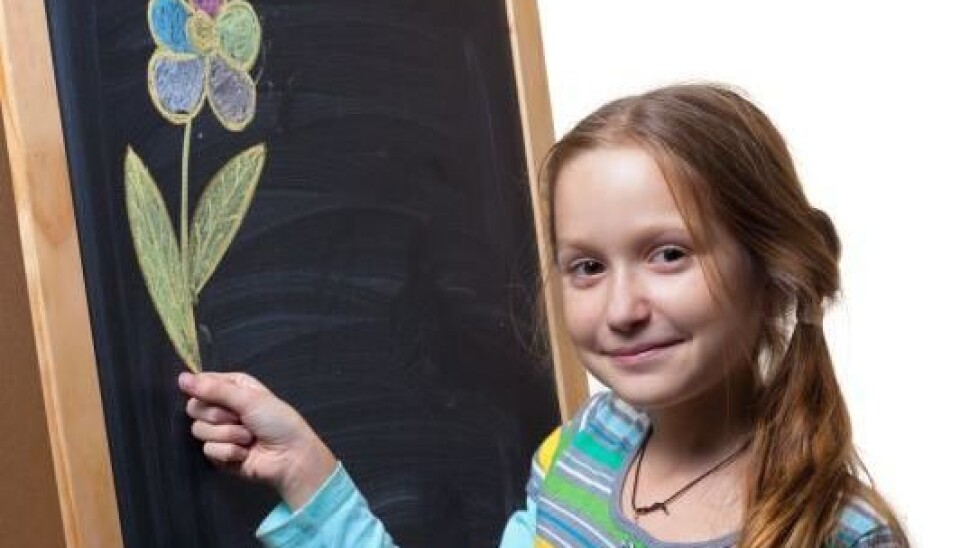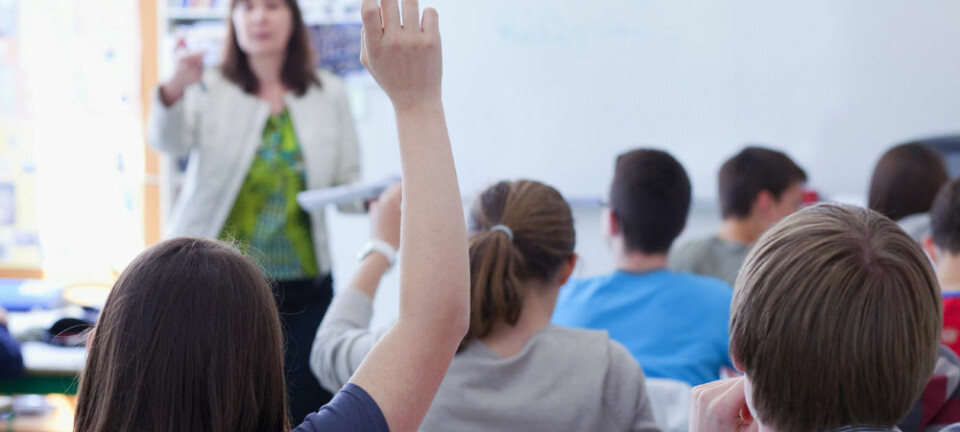
Creativity facilitates learning
Brain research and studies conducted in primary schools show that incorporating theatre, film, art and music into teaching facilitates learning – and fun.
Many children never manage to learn their grammar while in school. They do learn the rhymes and terms that are meant to help, but they never work out how to apply that knowledge.
According to new research, this could all be different: if only teachers would lighten up on the revision and have their students make cartoons about grammar instead. This would teach children to use their skills practically.
The new study concludes that school children learn a lot from looking at or creating art in class. This is owing to the numerous new neural paths that are created in the brain when we engage in creative activities. Paths that are optimal for acquiring new skills.
Art makes grammar easier
That knowledge has recently been implemented in a number of pilot projects in Danish primary schools.
At one school, we used animation art in Danish and maths classes. In Danish, the students made a short cartoon that taught them basic grammar. The films had to be about a person (a subject) who did something (a verb) and who had a quality or characteristic (an adjective).
“At one school, we used animation art in Danish and maths classes. In Danish, the students made a short cartoon that taught them basic grammar. The films had to be about a person (a subject) who did something (a verb) and who had a quality or characteristic (an adjective),” says associate professor Tatiana Chemi of the Department of Learning and Philosophy at Aalborg University, who conducted the study.
“Both the teachers and the pupils reached the conclusion that learning grammar was easier that way,” she says. “The children hadn’t even realised that they were in the process of learning something. But they remembered the grammar they had learnt and knew how to use it. And at the same time, they’d had fun.”
Emotion is the gateway to good learning
For centuries it has been a common conception that emotion and learning should be kept separate. It was believed that emotion would only muddle things and spoil our ability to think clearly. However, the latest research into cognition and brain science paints a completely different picture:
“We took a completely wrong view on emotion when we believed that feelings should be repressed in learning situations,” says Chemi.
The children hadn’t even realised that they were in the process of learning something. But they remembered the grammar they had learnt and knew how to use it. And at the same time, they’d had fun.
“Emotion and cognition are linked, and it’s impossible to separate them. We learn and develop on the basis of emotion. If you have brain damage in the prefrontal cortex where emotion is developed, you will have difficulties applying your knowledge and solving concrete problems. People with this type of brain damage are able to recount logical reasoning, but they are unable to use what they’ve learnt,” she says.
“When we have that knowledge, it becomes interesting to look at art in relation to learning. The reason is that we’re only able to understand art if we use emotion and empathy. So art can open a door in the brain that gives us access to new skills that we can use in practice.”
Understanding films requires empathy
When we look at paintings, see a film, go to the theatre or listen to music, we employ different parts of our brain, including the parts that are associated with emotion and empathy.
In order to understand a movie plot, we rely on some highly complex cognitive processing. We’re only able to put ourselves in the protagonists’ place and understand their emotions and motives if we let our own emotions and empathy play a part. That’s how we understand why the characters do what they do.
I would like to see schools become just as good at teaching children to ask questions as they are at offering answers. That’s important, because that’s the source of all development, creativity and innovation.
The same capacities are used when making films. A director needs to know what he wants his or her audience to feel when they see the film.
When children make grammar cartoons for others to understand, their emotions and empathy is activated – and so, the gateway to learning is opened.
All art can be used in teaching
According to Chemi, cartoons are not the only art form that teachers can use in class:
“There’s a great learning potential in art – both the art you make yourself and the art you see. Because of this, we should be integrating all kinds of art in the entire curriculum. It should be employed in Danish, maths and history alike,” she says.
It’s up to researchers and teachers to find ways of integrating art into teaching. Chemi has a few ideas:
- Language and literature teaching: Here theatre is a good choice. Especially if the students are teenagers in the process of exploring who they are as people. Students can act based on a book they have read. In that way, they learn to put themselves in someone else’s shoes and relate to their life and identity. They practice understanding a story and being grown-up. Historical events can also be ‘acted into’ the student’s ‘knowledge bank’, if a history teacher is up for it.
- Maths: Listening to music can – somewhat surprisingly – be a good way to learn maths. But it requires that the teacher explains to the students how maths can be used for understanding music. Elements such as rhythm, breaks, length and structure are all typically understood through the use of maths.
- Science: A lot of the materials used in the art room encourage scientific challenges. For instance, clay changes when it’s shaped, dried or burnt in an oven. This can give the students a fundamental scientific insight into how energy, such as heat, can affect a material.
- Thinking scientifically: In Chemi’s own teaching at university, she asks students to practice their scientific approach by observing all details and nuances of a painting before they start pondering its meaning.
“In this way, students grow more aware of when they are observing and when they are interpreting. When conducting science, it is important to be able to make that distinction,” she says.
“At the same time, they grow accustomed to composing questions on the basis of observation. I would like to see schools become just as good at teaching children to ask questions as they are at offering answers. That’s important, because that’s the source of all development, creativity and innovation.”
Art creates motivation in teaching
Art teaches children to use their curiosity – and if teachers manage to integrate it into their teaching, it quickly becomes much more interesting for their students.
“If students find their own questions, it will no longer be necessary to motivate them – because the motivation will simply grow naturally. If I’m curious about something, there’s no need to try to motivate me. And that’s where art used in class comes in,” says Chemi.
Other researchers see the perspectives of the studies. The project is praised by Anders Michelsen, a lecturer in art history and visual culture at the Department of Arts and Cultural Studies at the University of Copenhagen.
“I think it looks really good. I follow her points and support the idea to activate art in teaching. Instead of going on an excursion to look at art in an historic castle, it can be used actively – making things such as videos,” he says.
The perspectives are remarkable
However, Michelsen also regards this as a great challenge and believes the new approach can bring unexpected perspectives to the table. It will completely change the way we perceive the world, if future generations are taught that emotions and learning are intertwined.
If primary school teaching becomes more emotion-based it will eventually change the way we handle social problems.
“If we start working with creativity outside of the traditionally defined spheres of art, in this way making creativity a collective, social and institutional phenomenon, it will also mean a change to our society,” says Michelsen.
---------------------------------------
Read the Danish version of this article at videnskab.dk
Translated by: Iben Gøtzsche Thiele
Scientific links
- Book (in Danish only): Kunsten at integrere kunst i undervisningen: Et praktisk-teoretisk bidrag til kreativ undervisning i folkeskolen. Aalborg Universitetsforlag, 2012.
- Immordino-Yang, Mary Helen & Damasio, Antonio. (2007). We Feel, Therefore We Learn: The Relevance of Affective and Social Neuroscience to Education. I: Journal Compilation. International Mind, Brain, and Education Society and Blackwell Publishing. 1(1). 3
- Chemi's study (in Danish only): Positive emotioner i kunstoplevelser og deres indflydelse på læring.









